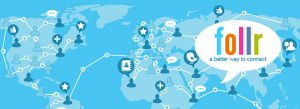Digital events platforms let marketers and organizers to plan, deliver and measure the results of digital events either live or on-demand.
The COVID pandemic condensed nearly a decade of digital business transformation into just a few months. Companies in every sector scrambled to adapt to the new realities. Travel restrictions, masking, and social distancing requirements spawned by the pandemic compelled B2B companies to adopt new ways of engaging with customers.
Relationships between businesses and their suppliers trended digital in recent years, but until the pandemic, in-person meetings and events played a central role in engaging with customers.
Event marketing, a mainstay of the B2B world, was profoundly impacted by this shift as brands sought alternatives to sponsoring and exhibiting at trade shows organized by professional content creators or to their own events for customers and prospects.
Digital events platform (DEP) companies that delivered those digital experiences saw a sudden surge in demand for their offerings. Customers clamored for features and solutions that delivered the value once created at in-person events.
While it’s difficult to quantify the value of in-person events to B2B marketing, anecdotal evidence suggests they are one of the few times event sponsors or organizers are able to engage multiple people within a B2B buying group in real-time, providing a unique opportunity.
Nearly a third (31%) of event marketers surveyed in 2018 said live events were their single most effective marketing channel, beating out content marketing, email marketing and many other categories, according to a study released by event management software company Bizzabo.
Although in-person events are taking place, most experts agree virtual events will remain an important channel. They cite digital events’ ability to engage geographically disparate audiences in a far more cost-effective way than in-person events.
This continued interest in digital events is spurring spending on event management software globally to grow from $ 6.56 billion in 2022 to $ 11.75 billion in 2026, a compound annual growth rate of 15.7%, according to the Business Research Company.
What is a digital events platform?
Digital events platforms enable event marketers and organizers to plan, deliver and measure the results of digital event experiences that serve geographically distributed audiences live or on-demand presentations.
Features of DEPs include agenda and registration management, delivery of video-based programming, interactivity for audiences and sponsors, and analytics to understand engagement and inform follow-up activities.
The strengths and weaknesses of a particular platform may be affected by the purpose for which it was created. For example, one platform may have been originally developed for in-person events, while another started with digital events as its focus.
Both may have added features to their products to accommodate additional users’ needs — the first adding capabilities for digital events and the second adding those for in-person — they may (or may not) still be strongest in the area of their original focus.
The rise of hybrid and its accompanying challenges
COVID is transitioning from pandemic to endemic in many parts of the world. In-person events are returning, but, in many cases, organizers are choosing to keep a digital element. Called hybrid events, these involve some attendees participating in person while others enjoy a digital experience. In these cases, in-person attendees’ experiences can be augmented with DEP functionality that facilitates engagement before, during and after the main program, and adds the ability to view sessions on-demand.
It’s important to note, however, that hybrid events pose special challenges for event organizers. Creating an engaging digital experience requires far more than setting up a static camera in front of a stage at an in-person event.
“…For an individual(s) to commit time and sometimes with a fee, the content better be compelling and not be just a ‘televised’ event version of your stage, participants and presentations,” wrote event consultant Bob Mitchell in a LinkedIn post. “With the rare exception of a Hamilton on Disney+, there’s a reason why live Broadway shows videotaped and then shown on a screen never has [sic] been really successful — much is lost in the translation to a different medium.”
Live streaming video, whether in conjunction with an in-person show or digital-only, poses technical and operational challenges that organizers must be equipped to handle, both from a staffing and an equipment perspective.
It’s the data, stupid.
Digital events and their hybrid counterparts are, and are likely to continue to be, linchpins of B2B marketing. Organizers, sponsors, and audiences are now familiar with their benefits: convenience, effectiveness, relatively low cost, and the ability to gather speakers and audiences from all over the world.
But it’s the intent data produced by digital event participants that set them apart from their IRL counterparts. These data are a byproduct of attendee participation in digital events. Intelligence gleaned from this information can be used in different ways by exhibitors and organizers, depending on the business model of the event.
For example:
- What sessions did they attend?
- Indicates interest in a topic or product/service.
- How much of the sessions do they actually watch? If the content can be timeshifted, when do they watch it?
- Demonstrates the level of interest. Is the participant casually flipping through, or are they very interested?
- Do they ask questions? If so, what questions?
- Questions may offer clues that enable a marketing or sales organization to judge intent.
- How did they respond to polls, quizzes and other interactive elements?
- Indicates engagement, and could indicate BANT (budget, authority, need, timing) if questions are written to do so.
- What on-demand experiences do attendees engage with? What do they download or share with their colleagues?
- Looking for additional resources is also an indication of engagement.
Essential elements of digital events
Digital event organizers typically use a variety of applications to create the user experience. These applications may be included in DEPs, or be assembled using point solutions to create a digital event stack. Here are some essential components of either construction.
Agenda management
Organizers of digital events typically begin by developing an agenda. Depending on the type of event, the agenda may cover a fraction of a day or multiple days. Assuming there’s a real-time component, the agenda may feature multiple session “tracks” that run concurrently, allowing attendees to choose between sessions to customize their experiences.
In some cases, attendees, too, manage agendas, creating their own calendar of sessions they intend to attend, either starting from scratch or a suggested itinerary created by the event organizer.
Agenda planning may incorporate email reminders or notifications that remind participants of the content they want to consume. An attendee’s personalized agenda may serve as the doorway to the sessions as they take place and may provide access to on-demand replays or additional features that augment the main experience.
Event marketing
The agenda also serves as an important marketing tool, attracting attendees and enticing them to register for the event. In addition to paid media placements, organizers employ email lists gathered at previous events or through other means. Once a visitor views the agenda, organizers may ask them to provide their email address to receive additional information or, perhaps, a discount on registration (if there is a fee to attend the event).
Organizers may also communicate with registrants via email as the date of the event approaches — an especially important tactic if registration is free, because someone who hasn’t made a financial commitment is more likely to be a no-show.
Registration and payment processing
Registration is one of the key elements of producing a successful digital event. Organizers gather contact information and answers to questions that indicate intent to purchase. Attendee accounts may be created in registration, unless it was created and stored from a previous event.
Organizers may also collect payments from attendees during registration, while providing speakers, staff and others with methods to register free or at discounted rates.
Video production
The “gold standard” for digital events is video content, whether live streamed or pre-recorded, watched live or on-demand.
Live events, such as the digital part of a hybrid conference, are the most technically challenging and require staffers to switch between cameras and views — close-ups of one of several speakers, for instance, or a full-screen view of a slide deck or video.
Pre-recorded content is easier to manage as it can be created and edited over time using multiple types of software to achieve the desired result. However, post-production adds to the time required to create presentations.
Brand and sponsor portals
The equivalent of a trade show booth is the sponsor portal, which is especially important when the business model is reliant on sponsorship. When that’s the case, organizers enable sponsors to create a branded microsite where attendees can gather information about the sponsors’ offerings and provide those businesses with intent data to facilitate an effective follow-up.
Data collection, analysis and activation
All of these attendee interactions generate data that can be leveraged in various ways, e.g., to suggest related content or experiences or facilitate 1:1 or group networking opportunities. Data that signals intent can be used to draw conclusions about the next best step to move a prospect toward a purchase decision.
Organizers can determine what content resonated best and use that knowledge in planning the next event.
Attendee engagement features
Event elements that allow attendees to interact, whether with presenters, sponsors or one another, are key to delivering a satisfactory experience. These can involve quizzes or game like elements users can call up pre- or post-session or on-demand. In a real-time setting, attendees can be encouraged to submit questions for the speakers or respond to polls related to the topic being discussed.
For events in certain categories, organizers might even provide more immersive content, such as a virtual walk-through or product demonstration.
The post What is a digital events platform and how can it help you? appeared first on MarTech.
MarTech(12)




